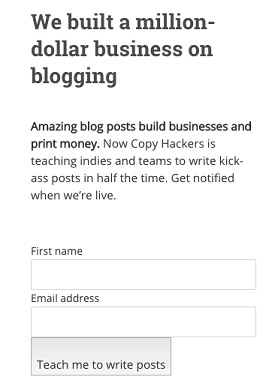
Table of Contents
Introduction
Landing pages create the first layer where the user interacts with your site. So their role in pushing the potential consumer to make the final purchase is crucial. The point of origin can be anything – an ad or a social post but it is the destination page that decides the fate of your strategy.
To help you out, we offer you this guide to crafting great landing pages-
Design
To ensure that your landing page converts your visitors, it is essential that you focus on the design aspect of it. Since that’s the first element any visitor encounters, it should have the ability to catch the attention of your potential user.
A study by Ion Interactive reveals that people form an impression in 1/120th of a second. This data clearly reveals the necessity of gripping the user with an appealing design. So here’s what you should do to have a user-friendly design:
- Keep your design simple and try to keep a few elements so the site looks clutter-free.
- Make sure you choose a responsive design for your site so the user experience is good no matter what device he uses to access it.

Content
Your landing page should be able to grasp your visitor’s attention quickly. For that to happen, your content should have a high engagement value. So when you are crafting your landing page, make sure to invest in visual content. Visuals, especially videos, help increase engagement, and boost conversions.
CTA
Call to action is the actionable element in a landing page that ultimately takes the user to complete the desired action. For crafting great landing pages, the CTA should be compelling. Take, for instance, this copy by Copyhackers. With “We build a million-dollar business on blogging”, they catch your attention and then move on to accomplishing their goal – in this case – building their email list.

Closing thoughts
When landing pages are designed, it is essential to keep the user at the core of your strategy and build your plan around it. Once you understand your user’s perspective, the design, CTA, and content should emerge from that foundation so they work together to enhance buyer’s journey.
FAQs
Are Landing Pages Easy To Create?
A Landing page is not just a webpage; it is the backbone of your website. Landing pages are designed with a specific goal in mind. They are meant to eliminate distractions and guide visitors toward taking the desired action. The difficulty level of creating a landing page will depend on your experience and the tools that you are using. Some websites offer user-friendly interfaces, making building a landing page relatively easy for beginners. However, designing a landing page that converts visitors into customers may require some level of expertise.
What Are The Types Of Landing Pages?
There are thirteen types of landing pages:
- Squeeze Landing Page: The main aim is to acquire email addresses.
- Splash Landing Page: Lead capturing is the primary purpose.
- Lead generation Landing Page: The same objective as splash landing pages, but acquires more data.
- Video Landing Page: The main focus of the landing page is a video.
- Click-through Landing Page: Entices viewers to convert.
- Sales Landing Page: Entice potential customers to complete purchases.
- Advertorial Landing Page: The aim is to capture the attention of potential buyers.
- Lead Magnet Landing Page: The purpose is to make potential customers return.
- Pre-Launch Landing Page: A steller page for a product about to be launched.
- Thank-you Landing Page: A great way to build relationships with customers.
- Unsubscribe Landing Page: Helps customers unsubscribe from a plan or service.
- Referral Landing Page: This helps customers refer your products or services to their acquaintances.
- 404 Landing Page: It is an error landing page, but you can make it fun by adding jokes and engaging content
What Is SEO?
SEO or Search Engine Optimization is a set of strategies and techniques to improve your website's visibility in SERPs.
The strategies help create high-quality, relevant content that fulfills the user's search intent.
SEO involves keyword research, content optimization, link building, and technical optimization. The main goal of SEO is to drive organic traffic to your website, which will help you increase your ROI. It helps your websites attract more visitors searching for relevant information, products, or services.
How Does SEO Work?
SEOoptimizes your website content to make it more attractive and relevant to search engines like Google, Bing, or Yahoo.
The essential components of SEO are:
- Keyword research: SEO begins with researching relevant keywords and phrases commonly used to find information about your products or services.
- Content creation: Consistently creating fresh, valuable, relevant content is essential for SEO.
- Link building: Building a quality backlink profile is a strong signal that your website is trustworthy and authoritative. This can be done through outreach and content marketing.
- Technical SEO: This focuses on the technical aspects of your website. The technique ensures that search engine crawlers can efficiently crawl into your website for indexing.
What Are The Types Of SEO?
There are four types of SEO:
- On-page SEO: It focuses on optimizing your web pages through relevant and high-quality content, meta tags, headings, optimized images, and other on-page elements that are SEO-friendly.
- Off-page SEO: Involves off-page aspects such as link building, outreach, and social media presence.
- Technical SEO: It deals with improving the technical aspects of your site, such as ensuring mobile friendliness and XML site mapping.
- Local SEO: Local SEO helps the website's visibility in local search results.






